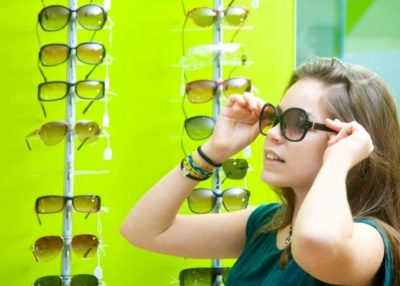In Spain, it is hard to find an adult without a pair of sunglasses. Not only are they necessary for the sun, but they are a fashion accessory too. However many children squint through the day.
For children and teenagers, they should use approved sunglasses that comply with the regulations. This is because the eyes of a child are more vulnerable than an adults as the pupil remains more dilated. And, also the pigmentation of the eye, which acts as a protective barrier, becomes darker with the passage of time.
Sun exposure
Almost 50% of the ultraviolet UV radiation to which we are exposed throughout life affects ocularly before the age of 18. Therefore, it is important to bear in mind the structures and eye tissues of children and teenagers are not fully developed. And as such, they are more sensitive than adults to solar radiation and have fewer defense mechanisms.
In addition, their annual exposure to the sun is three times higher than that of adults. This is due to the fact they spend more time outdoors. High sun exposure without protection can lead to eye damage. As a result, children may suffer symptoms of pain, photophobia, headaches and redness of the eyes.
Low quality sunglasses
The use of low quality glasses in children and teenagers can lead to short-term keratitis, photophobia and photo conjunctivitis. But also, in the long term, the damage can be more serious. This can be in the form of corneal alterations, degenerative lesions and acute burns in the retina that affect the vision permanently.
Therefore, the frequent use of approved sunglasses and regular application of sunscreens, is a MUST. And will drastically reduce the possibilities and risks of suffering any long-term damage.
Create good habits
Let your child choose the sunglasses that they like the most and they will be more likely to wear them.
Remember, even if the day is slightly cloudy, maintain the use of sun protection and get into the habit of wearing sunglasses.
Be a good role model by always using sunscreen, wearing sunglasses, and limiting your time in the sun. You’ll reduce your risk of sun damage and teach your kids good sun sense.


